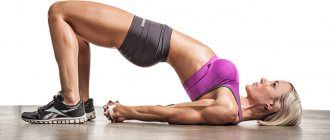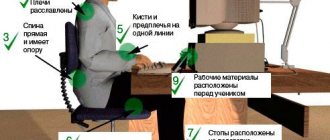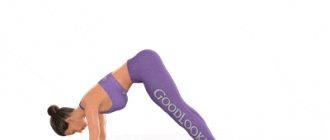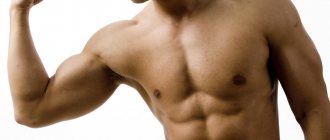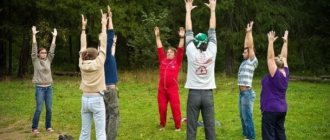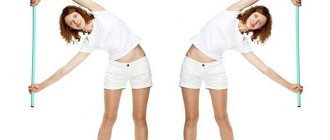When we live at a crazy pace and are incredibly busy (for example, every day from morning to evening), we want to start lifting heavy weights as quickly as possible, ignoring muscle warm-up before training. But when you skip the warm-up and just go from 0 to 40kg, you're preventing your body from being more efficient and greatly increasing your chance of injury.
Strength training without warming up is a huge No!
When strength training is performed, muscles shorten and lengthen, and if they are not warmed up, stretched and conditioned, they are more prone to tearing and stretching.
Why do you need to warm up before training for weight loss?
Preparation is the key element of the lesson. Warming up before training at home or in the gym helps to gradually increase your heart rate, reaching a working rhythm. Those who warm up have increased blood circulation in their ligaments, muscles, and tendons. This way you can catch the right moral attitude. Benefits of Pre-Workout for Weight Loss:
- Metabolic processes are accelerated.
- Muscles, tendons, and ligaments warm up and their elasticity increases. The risk of sprains and injuries is significantly reduced.
- Adrenaline is released into the blood, making it easier to endure power loads.
- The functioning of the cardiovascular system is optimized.
- Coordination of movements improves, attention increases.
- Blood circulation accelerates, muscles are filled with nutrients, valuable oxygen for their work.
- Increases endurance.
- The production of hormones responsible for energy production increases.
Warm up before running
Before sports outside the gym, such as running, you also need to warm up. Without warmed up muscles, an athlete will not be able to run effectively. Since not only professional athletes, who usually know how to warm up, but also amateurs engage in running, the issue of proper warm-up is also relevant.
It is best to start warming up by walking before running. A distance of 100–200 meters will be sufficient. The pace when walking should be gradually increased. To increase blood supply, it is recommended to perform vigorous swinging movements with your hands. After the walk, you should do a few squats or jog at an easy pace for a couple of minutes.
This is a fairly easy warm-up complex that does not take much time and easily becomes a habit. And thanks to such a simple series of exercises, the effectiveness of further jogging increases significantly.
General recommendations for any sport: beginners should choose a general program, the description of which is easy to find. In the future, you will understand what is worth paying more attention to and what is of secondary importance. The warm-up may well vary between training days.
The dangers of not doing warm-up exercises
The vast majority of people immediately begin intense training to lose weight, without preparing, which is completely wrong. Consequences of exercising without warming up:
- Sprained ligaments are problem #1. Such an injury causes a lot of pain and forces you to give up training for weight loss for a long time (up to 1-2 months).
- A sharp rise in pressure. The symptom indicates harm to the body, both for hypertensive and hypotensive patients.
- Joint injury. Requires a long recovery, and subsequently constantly makes itself felt. Unwarmed joints are very easy to damage when training for weight loss, especially the hip, knee, shoulder and ankle joints.
- Dizziness and fainting due to increased stress on the heart.
What are the dangers of not warming up?
Skipping preparation for physical activity is dangerous, first of all, due to injuries of various kinds. The most common are sprains of various muscles and dislocations of joints. More complex are ligament ruptures.
With sudden physical activity without warming up, the musculoskeletal system is simply not ready. Undeveloped joints can become damaged, and unheated muscles will react with pain and stiffness.
It is not necessary that as soon as a warm-up is missed, the body will respond with injury. But the risk of injury increases greatly. At the same time, the effectiveness and duration of exercise decreases, since the muscles will get tired faster.
How to properly warm up before training
A simple complex will help you warm up as effectively as possible before exercising for weight loss. Take advantage of expert advice:
- Warm up from top to bottom: neck, shoulders, arms, chest, back, core muscles, legs.
- Choose a dynamic, but not exhausting pace. You need to warm up gently, prepare for intense work, ensuring weight loss. The body should feel warm, but not uncomfortable. It is better to start with reasonable loads, slowly, gradually increasing the speed, intensity and range of movements.
- If you have to warm up before working out at the gym, replace your usual cardio by running on a treadmill or working out on an elliptical machine. Start at a slow pace so that your heart rate rises gradually.
- The optimal warm-up is dynamic, not static exercises. Statics are suitable for cool-down - muscle stretching, completing a workout for weight loss.
- Avoid sudden movements, jerks, perform exercises smoothly.
- Monitor your feelings. Avoid pain and discomfort.
- If it’s cool (this happens not only during outdoor exercise, but also often indoors and in gyms), dress warmly or increase the warm-up period to 20 minutes. Remember that muscles cool down quickly.
- If on a particular day you plan to work out one part of the body much more intensively, focusing on a block of exercises, then during the warm-up, pay increased attention to it. For example, when planning workouts to lose weight in your legs, thoroughly warm up your knees, hip joints, and shins.
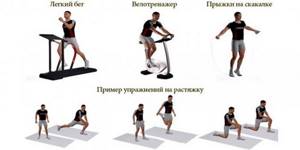
Necessary conditions for training at home
You need to do a warm-up at home in a well-ventilated area . There should be no stuffiness or stagnant air. You should not exercise in rooms where there are strong foreign odors. For example, a room that has recently been painted.
Clothing should be comfortable and not interfere with warming up. The same applies to shoes: it is better to choose suitable sports shoes, sneakers or sneakers. There should be no obstructive decorations that could get caught or scratched.
According to many athletes, warming up gives the greatest effect in the morning. But if you can’t exercise in the morning, this is not a reason not to exercise at all. By the way, it is useful to do a warm-up even on days when there are no workouts. This will invigorate the body and add tone for the whole day.
Before warming up and training, you should not eat for about an hour . But after training it will be useful to eat. You can drink if you really want to, but take small sips and little by little. There is no need to be distracted by extraneous things during classes, this will reduce efficiency. Good music can give you an extra boost of energy.
Cardio exercises to warm up muscles before exercise
Special elements are needed to increase blood circulation, increase body temperature, and prepare muscle fibers for stretching. The entire approach takes 1–2 minutes, one exercise is performed from half a minute to 45 seconds - actively, at a fast pace. The complex looks like this:
- Walking with knees raised. Bend your arms. Take deep steps in place, touching your knees to your elbows each time.
- Stand straight with your hands at your waist. Lunge to the side with your left leg while simultaneously raising your arm and bending slightly at the waist. Repeat for the right side.
- Finish your warm-up with an intense run in place.
The second block of cardio exercises is performed after stretching and takes 2–3 minutes. Elements are performed for 40–60 seconds at a fast pace. Procedure:
- Run in place.
- Jumping rope (you can imitate them without sports equipment).
- Energetic jumping. Once - spread your legs to the sides, raise your arms above your head and clap. Two - feet together, arms along the body.
- Run in place, raising your knee to waist level.
Joint warm-up
Gymnastics to activate the work of tendons, joints, ligaments, and improve their mobility will help to work the periarticular muscles. Each exercise is repeated 10 times (if necessary, 5 times for each side):
- Stand straight, feet slightly wider than shoulder-width apart, hands on your waist. Rotate your head along the trajectory left-down-right and in the opposite direction, without throwing it back.
- Stand straight with your feet shoulder-width apart. Make 5 circular rotations with your shoulders forward and backward.
- Make energetic turns of your head left and right.
- Standing straight, spread your arms to the sides. Bend your elbows. Make 5 rotations towards yourself and 5 away from you.
- Place your feet wider than your shoulders. Spread your arms to the sides and do 5 rotations forward and backward.
- Clasp your hands in front of you. Rotate your wrists, alternately bringing your left and right hand up.
- Feet wider than shoulder width, hands on waist. Rotate your pelvis clockwise, then in the opposite direction.
- Stand straight, feet together, hands on your waist. Raise your left leg bent at the knee, take it back and place it on the floor. 5 reps on each side.
- Stand up straight. Rotate your knees clockwise and counterclockwise, placing your palms on them and bending them slightly.
- Stand straight with your hands at your waist. Lift your left foot off the floor and rotate clockwise and counterclockwise. Repeat with the other leg.

Warm-up stretching exercises
These are elements to give elasticity to muscles. A set of exercises for warming up (perform 15–20 seconds each):
- Place your feet shoulder-width apart. Bring your arms back to your sides, then cross them in front of you.
- Stand up straight. With your left hand, grab your right hand at the shoulder and pull it towards you. Repeat for the other side.
- Stretch your triceps. Raise your arms above your head. Bend them at the elbows and bring them back. With your right hand, pull your left (just below the elbow) and vice versa.
- Stand straight with your feet wider than shoulder-width apart. Perform tilts left and right. Stretch together with your arm straight.
- Place your feet slightly wider than shoulder-width apart and spread your arms out to the sides. Make a "mill". Bend over, touching your left palm to your right foot and vice versa.
- Place your feet shoulder-width apart and place your hands on your knees. Squat down deeply. Slowly return to the starting position, arching your back strongly.
- Spread your legs wide. Place your palms on your knees and do a light squat. Bend over, turning your left shoulder toward your right knee. Repeat on the other side.
- Stand up straight. Lunge backwards with your left and right legs alternately. At the same time, place your knee on the floor and clasp your hands in front of you.
- Lunge back with your left leg straight. Place your palm on the floor near your supporting foot. Turn your torso and raise your right arm up. Repeat on the other side.
- Place your left foot in front of you on your heel. Bend your right knee. At the same time, move your hand backwards in a circular motion and touch your left toes with your toes. Return to the starting position. Repeat on the other side.
- With your right hand, hold on to some support (chair, edge of a table, machine). Bend your left leg back and catch it with your hand. Using springing movements, pull your foot towards your buttock. Repeat on the other side.

How to end your warm-up
The last stage of warming up is restoring breathing. Completes in 1–1.5 minutes. Choose one of these exercises:
- Inhale – pull your arms up through extension to the sides. Exhale – lower your arms and do a light squat.
- Inhale – raise your arms up to your sides. Exhale – bend forward with straight legs.
Main types of exercises
Warm-up consists of simple exercises. Its duration is at least 10 minutes. Movements are smooth, slow. It is necessary to gradually lower yourself from your head to your toes. First, he warms up the neck, then the shoulders, and so on.
Exercises for twisting, squats, turns and bends, ointments with legs and arms warm up the body well. If possible, you can run for a couple of minutes. When running, a large number of muscles are used. The heart begins to beat faster, blood flow accelerates. Running begins and ends with walking.
Cardio warm-up
Cardio warm-up is divided into two groups: universal and special exercises. The first ones are suitable for any type of physical activity. These complexes are learned at school. First, the body is warmed up using bends and turns, followed by breathing exercises.
A special program is used before intensive work. It warms up the muscles as much as possible. Includes jumping, brisk walking, going down and up stairs. Before working on your abs, you need to spin the hoop for a couple of minutes.
A light cardio warm-up lasts a couple of minutes. It includes brisk walking in place or light jogging.
Joint gymnastics
Gymnastics has a positive effect on joint mobility and coordination of movements. This complex is so effective that it can act as a main workout. It includes lifting on your toes, bending, rotating and twisting the body. You need to repeat the exercises 10 times.
Dynamic stretching of different muscle groups
Stretching before training gives a good effect. Exercises are performed with a certain amplitude, without sudden movements. Otherwise, injury may occur.
First, warm-up exercises are performed. They should be smooth, as comfortable as possible, without pain. When the muscles are warm enough, you can begin stretching.
Dynamic stretches include arm raises, shoulder stretches, triceps stretches, bending and squats.
After stretching, it is advisable to do cardio exercises again. They will warm up and raise your body temperature.
Restoring breathing
The final stage is the restoration of breathing. A deep entry is made, and then exhale, while squatting or bending.
How to complete a weight loss complex
The workout should be completed by performing simple exercises, as in the initial stage - warm-up, aimed at calming and relaxing the muscles. Simple calm walking helps stabilize the pulse and heartbeat.
It will take about a week for a beginner to get used to the load. After this, you should gradually and little by little complicate the training, increasing the number of exercises performed in one approach and the number of approaches. Particular attention should be paid to rationalizing nutrition in order to speed up metabolism. This will make the fat burning process more effective.
To make it more convenient to perform exercises for exercise in the morning, it is useful to have a plan previously drawn up on paper with a clear sequence of actions. There it is advisable to note the main parameters, for example, the available number of repetitions (until fatigue) and monitor progress, gradually increasing the load.
Cool down after training
Athletes should also know about such a concept as a cool-down. Before training, the guy or girl warmed up and had an effective workout, but as a result, some substances accumulated in the body. These are stress hormones, lactic acid and so on. The person’s pulse and blood pressure also increased significantly. To normalize these processes, you also need to do a cool-down in the gym or after a home workout.
Under no circumstances should you just sit on a bench or take a shower after your last approach and then go home. So you can simply lose consciousness from overexertion or too intense reduction in pressure. Stress hormones will not provide proper relaxation. If the muscles cool down sharply after training in the rocking chair, then blood stagnation and muscle congestion will occur, all of which will cause severe pain.
That’s why it’s so important to pay attention to the cool-down. It only takes 5 minutes
You can use a cardio machine or running. Maintain an average pace for 3 minutes, and then gradually move to an easy step. You can also use weights or dumbbells. The main thing is that the load gradually decreases until it disappears completely. Proper exit from training is just as important as warming up before a hard workout.
All this suggests that any lesson consists of three parts: warm-up, training itself and cool-down. Don't skip these steps - and the results will be impressive.
A set of morning exercises
You should start exercises for exercise in the morning without immediately jumping out of bed. A competent sequence of actions is essential. It is most advisable to do a light warm-up-massage for the body after fully awakening.
Movements go from the periphery to the center of the body in order to further activate the lymphatic system and promote additional cleansing of the body from waste and toxins. In addition, you should awaken the nervous system and there are also effective methods for this.
For example, the following algorithm can be used (right in bed after waking up):
- rubbing the palms of your hands against each other, at first one palm puts a little pressure on the other, then vice versa;
- light facial massage with warm palms, movement from the top to the neck, press your palms to your eyes, massage the area around the eyes;
- press the centers of the palm to the ear canals, create a slight vacuum, sharply remove the palms (improves the sense of hearing), then massage the ears, lightly knead the earlobes and cartilage;

- stroking each hand from the fingers to the body, lightly kneading;
- identical actions with legs;
- stroking movements along the body with concentration on touch, in order to feel the body completely and whole, move on to activity.
This algorithm can be supplemented with some other actions according to your own taste. For example, some people like to massage their calves separately in the morning and this makes sense and is beneficial. One way or another, the point is to prepare yourself for more active movements, warm up and feel your body better.
Completing charging
In the final stage, it is useful to “collect” the whole body.
Therefore, the corresponding basic exercises are used here in the following sequence:
- bend forward to straight legs while sitting, without sudden movements and with fixation - about a minute;
- bridge with fixation (if necessary, preparatory lifts into the bridge and rest are made, and then the position is fixed) - half a minute;
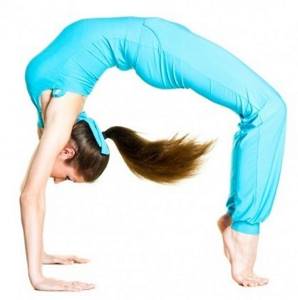
- push-ups – an affordable but not excessive number of repetitions.
After the set of exercises for exercise in the morning is completed, you should lie down quietly and relax for 2-3 minutes. Next they go to wash and do other morning chores.

